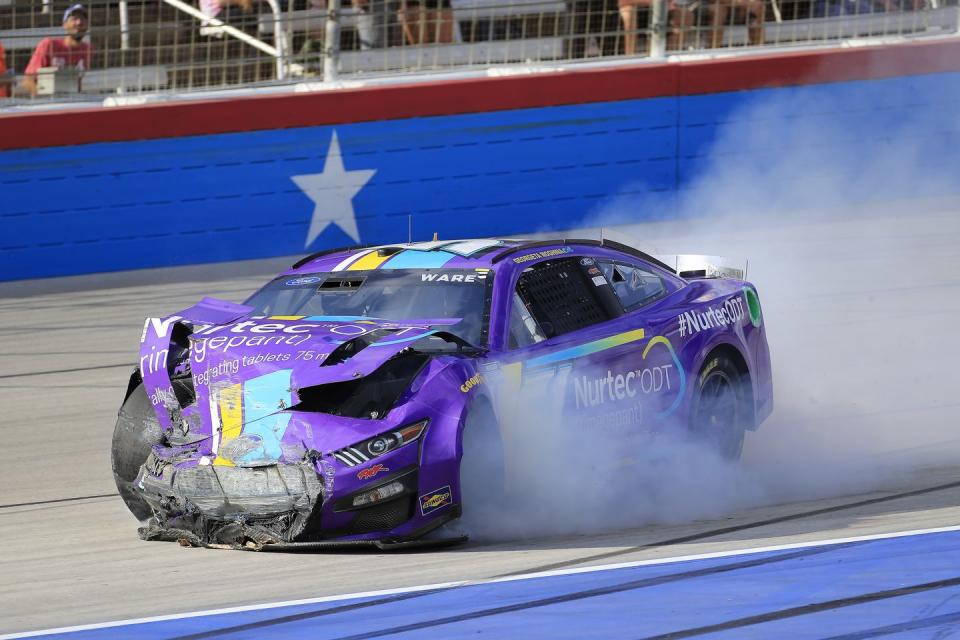What NASCAR is Doing Following Series of Severe Crashes

Beginning with the July 9 Atlanta race, the car’s front clip will be softened so it will be more collapsible during a crash.
A 0.060-inch steel plate is being installed in the right-side door due to this spring’s crash at Talladega involving Kyle Larson and Ryan Preece
In 2022 the sanctioning body’s Cup Series not only experienced more crashes than the historical norm, but “higher severity crashes."
After a season of NASCAR Cup drivers enduring the most “severe crashes” since the current data system was enacted in 2011, numerous changes are being implemented to the current car in an effort to curtail the severity of the race collisions.
Beginning with the July 9 Atlanta race, the car’s front clip will be softened so it will be more collapsible during a crash while its right side will be strengthened. A 0.060-inch steel plate is being installed in the right-side door due to this spring’s crash at Talladega involving Kyle Larson and Ryan Preece. Previously, the door plate was constructed of aluminum.
NASCAR vice president Safety Engineering Dr. John Patalak said that in 2022 the sanctioning body’s Cup Series not only experienced more crashes than the historical norm, but “higher severity crashes.”
CLICK HERE TO SEE THE KYLE LARSON-RYAN PREECE CRASH
“Cars were hitting walls at higher speeds at higher angles than we have historically,” Patalak said. “It didn’t have anything to do with the car itself. We had speeds and angles in 2022 that we have not had historically that were very challenging to the car.
“For whatever reason, a combination of things … car setups and everything being new and the feel of the car for the drivers … we had crashes that just had not occurred all the way back through 2011 in Xfinity or Cup. They were really big, severe crashes.”
The car’s new right-side requirements were the result of the Talladega crash. The front clip changes had been under development for several months. NASCAR is allowing teams to modify existing parts in their inventory. For those unable to modify the parts, Technique Chassis, the vendor that supplies the current chassis, front, center, and rear body mounts, is available. Also, NASCAR will be involved in helping teams absorb the cost required to make the modifications.

NASCAR vice president Vehicle Design Brandon Thomas doesn’t believe a “pandora’s box” is being opened by allowing the teams to make the modifications because “everybody has a vested interest in making this work.”

 Yahoo Autos
Yahoo Autos 